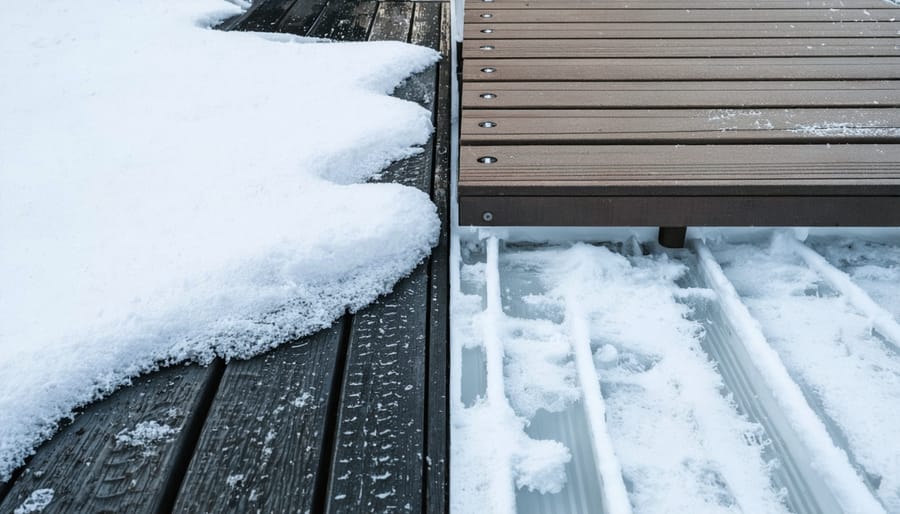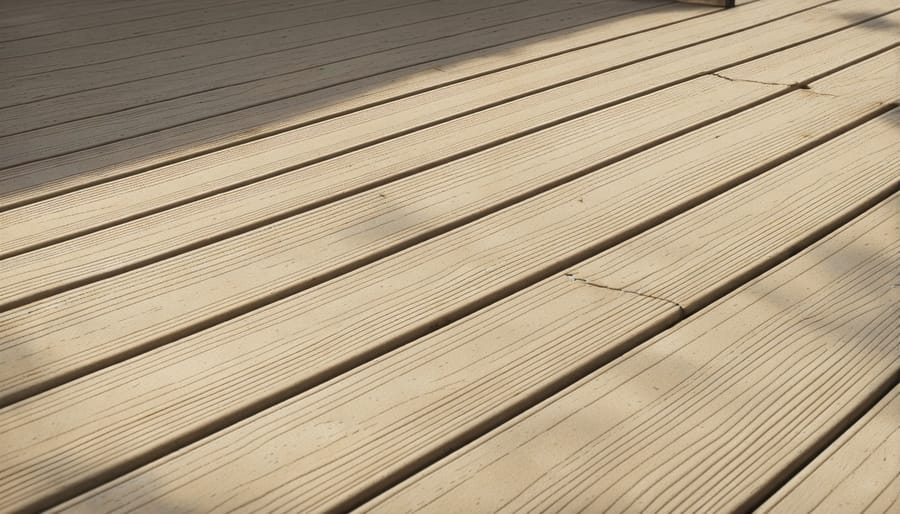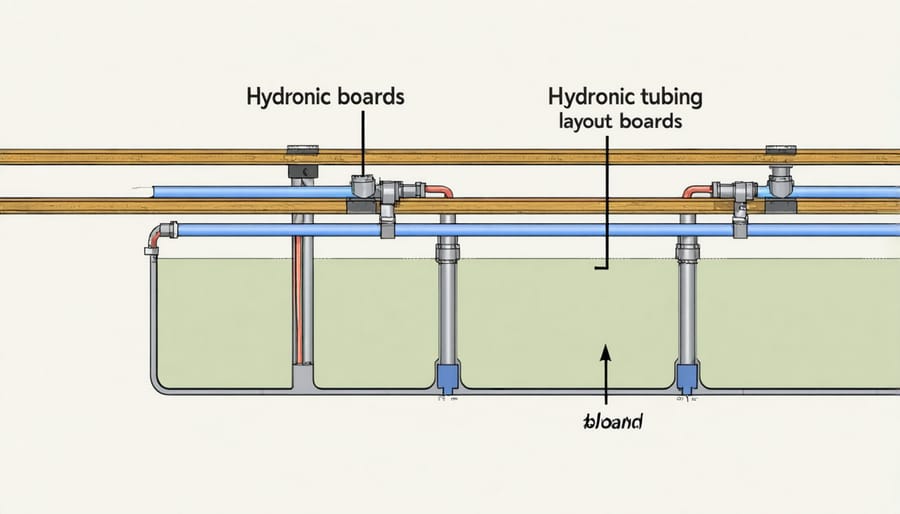Keep Your Deck Safe All Winter: Smart Snow Melt Systems That Actually Work

Transform your deck into a safe, accessible winter pathway with a modern snow melt system that eliminates dangerous ice buildup and protects your investment. Electric heating cables or hydronic tubing installed beneath deck boards automatically maintain ice-free surfaces during snowfall, ensuring reliable winter shed protection and year-round accessibility. These systems not only prevent slip hazards but also extend deck longevity by reducing moisture damage and freeze-thaw stress. With energy-efficient operation and programmable controls, deck snow melt systems offer homeowners a hands-free solution to winter maintenance while preserving their outdoor living spaces. The initial investment delivers long-term value through reduced manual snow removal, lower maintenance costs, and enhanced property safety during harsh weather conditions.
How Deck Snow Melt Systems Protect Your Investment
Safety First: Preventing Slip Hazards
A deck snow melt system is more than just a convenience – it’s a crucial safety investment that protects both your family and visitors. Winter slip-and-fall accidents are among the most common household injuries, but they’re also highly preventable. By maintaining a clear, ice-free path to your deck and shed, you significantly reduce the risk of accidents that could lead to serious injuries or costly liability claims.
These systems work proactively, preventing ice and snow accumulation before it becomes a hazard. Unlike traditional methods like salt or manual shoveling, snow melt systems provide consistent protection 24/7, ensuring safe passage even during overnight snowfall. This is particularly valuable for early morning access to your shed or during emergency situations when immediate, safe access is crucial.
For homeowners with elderly family members or those with mobility challenges, a deck snow melt system becomes an essential safety feature. It eliminates the need for risky winter maintenance tasks and provides peace of mind knowing that your deck remains a safe, accessible space throughout the winter months.

Protecting Your Deck’s Structure
A snow melt system does more than just clear your deck of snow – it’s a vital tool to prevent moisture damage and extend your deck’s lifespan. When snow accumulates and melts naturally, it creates standing water that can seep into wood fibers, leading to rot, warping, and structural weakness. By maintaining a consistent temperature and eliminating snow buildup, these systems help keep your deck dry and protected throughout winter.
The controlled melting process ensures that water doesn’t pool on your deck surface, instead directing it safely away through proper drainage channels. This systematic approach to snow removal is particularly effective at protecting vulnerable areas like board joints and fastener points, where moisture typically causes the most damage.
Additionally, snow melt systems reduce the freeze-thaw cycle impact on your deck materials. When water repeatedly freezes and thaws, it expands and contracts, which can cause wood fibers to break down over time. By maintaining more stable conditions, your deck remains structurally sound and beautiful for years to come.
Types of Deck Snow Melt Systems
Electric Heat Cable Systems
Electric heat cable systems offer an efficient solution for keeping your deck snow-free during winter months. These systems consist of specially designed heating cables that are installed in a serpentine pattern beneath your deck boards. The cables generate consistent warmth that prevents snow and ice accumulation, ensuring safe access to your shed year-round.
Installation typically involves securing the cables to the deck surface using appropriate clips or fasteners, ensuring even heat distribution. It’s crucial to establish proper weatherproof electrical connections to protect the system from moisture and ensure reliable operation throughout the winter season.
Most electric heat cables operate on standard household voltage and can be controlled through smart thermostats or snow sensors, activating only when needed. This automation helps optimize energy usage while maintaining effective snow melting capabilities. The cables are typically embedded in specialized mats or directly attached to the deck surface, making them virtually invisible once installed.
For maximum efficiency, consider installing heat cables in high-traffic areas and pathways leading to your shed, rather than covering the entire deck surface. This targeted approach provides practical snow management while keeping operating costs reasonable.

Hydronic Heating Solutions
Hydronic heating systems offer one of the most efficient and reliable solutions for keeping your deck snow-free during winter months. These systems circulate a mixture of water and environmentally-friendly antifreeze through a network of flexible PEX tubing installed beneath your deck surface. The warm fluid radiates heat upward, effectively melting snow and ice before they can accumulate.
One of the main advantages of hydronic systems is their even heat distribution. Unlike electric cables that create distinct warm zones, hydronic tubing provides consistent warmth across the entire deck surface. This technology also operates at lower temperatures than electric alternatives, making it more energy-efficient and gentler on your deck materials.
Homeowners particularly appreciate the system’s silent operation and minimal maintenance requirements. Once properly installed, the sealed tubing network can last for decades with routine seasonal checks. The boiler or water heater that powers the system can often be integrated with your home’s existing heating infrastructure, potentially reducing installation costs and improving overall efficiency.
While initial setup costs may be higher than other options, the long-term energy savings and reliable performance make hydronic heating an excellent investment for deck protection.

Installation and Maintenance Tips
Installing a deck snow melt system requires careful planning and attention to detail for optimal performance. Start by thoroughly cleaning your deck surface and mapping out the heating cable layout. For wooden decks, secure the cables using manufacturer-approved mounting clips spaced every 12-18 inches. For concrete surfaces, embed the cables during the pour or install them in channels cut into existing concrete.
Always work with a qualified electrician to handle power connections and ensure proper voltage requirements are met. Install a temperature sensor in a location that accurately represents deck conditions, typically near the edge where snow tends to accumulate first.
For maintenance, conduct visual inspections before winter to check for any damaged cables or loose connections. Test the system in fall before the first snowfall to ensure everything works properly. Keep the control panel clean and protected from moisture, and regularly clear any debris that might accumulate around sensors.
Common maintenance tasks include:
– Checking cable connections annually
– Cleaning sensors every 6 months
– Testing system controls before each winter season
– Inspecting mounting clips for security
– Monitoring system performance during operation
If you notice any issues like uneven heating or system failure, contact a professional immediately. Proper documentation of installation and maintenance activities helps track system performance and identify potential problems early. Remember to keep manufacturer warranties and maintenance guides in a safe place for future reference.
Don’t let winter weather compromise your deck access or safety. A snow melt system is a smart investment that provides peace of mind and protection for your deck throughout the harsh winter months. By choosing the right system, following proper installation guidelines, and maintaining it regularly, you can enjoy safe, hassle-free deck access year-round. Take action now to protect your deck investment and ensure comfortable outdoor living spaces, even during the snowiest days of winter.

